When beginning Umineko no naku koro ni, it was been difficult to predict that the series would by the end feature no less than six witches, one dragon, one butler, three military bunny girls, seven floating females wearing school uniforms crossed with leotards, and hordes of sharply suited goat-men. Saying that it eases into these bizarre characters with subtle hints and smart progress would be a bare-faced lie - it springs these absurdities without warning or concern for cohesion. This is indicative of the overriding attitude of the show: favouring reckless abandonment of storytelling for twists that often test the limits of patience. Were it not so melodramatically entertaining it would be hard to endure.
Starting with a set up familiar to those who experienced 07th Expansion's prior work, Higurashi no naku koro ni, a typhoon has sealed off an island of eighteen members of the Ushiromiya family who are tasked with solving a riddle to earn the family inheritance. The riddle pertains to a Golden Land touted by the mysterious witch Beatrice, who takes a sadistic pleasure in torturing and murdering the family members as the bonds fracture and accusations fly. Initially a murder mystery with occult overtones, when the witch Beatrice finally reveals herself, one of the family members refuses to acknowledge her status as a witch and starts a competition to prove each murder could have been committed by a human rather than magic. The series covers four stories, resetting after each one, and introduce increasingly more characters, both magical and human, as well as a deeper look at the magical world inhabited by Beatrice.
The most problematic part of the series is understanding what precisely is trying to be achieved. Battler ostensibly wishes to prove that witches can not exist through torturous application of logic, most of which can barely be given the label due its utter ludicrousness. The thrust of this argument is achieved through a ham-fisted "red truth", which involves Beatrice speaking a phrase and the screen tinting red to indicate that her words are the absolute and unquestionable truth. This poses the immediate question of why not simply utter that witches are in fact real; however this is briefly raised but subsequently discarded due to both parties wishing for an ideological rather tactical victory. Later on in the series this truth speaking can supposedly be countered by, what else, "blue propositions" which must be responded to rather than ignored. Suffice to say, already the bedrock of the series is shaky by implementing such a blunt way of establishing fact from conjecture.
Even when faced with overwhelming evidence, not the least of which that he is arguing with an omnipresent witch who can teleport him at will, Battler maintains his devastating stupidity through to the bitter end. As an audience we are privy to the minutiae of Beatrice's malediction, questioning why we should sympathise with Battler when he is arguing a losing corner - not helped by his reliance on spurious logic that can be charitably described as creative. The plot does nothing to aid this ambivalence: it straps on subplots with glee and rectifies slower periods by bringing in more characters rather than concentrating on the existing ones. With an initial cast of eighteen and a splendid introduction to the back biting and petty bickering stereotypical of a well-to-do pseudo-aristocratic family, plunging into magical girls and living stuffed animals feels sloppy. There is also the more egregious fault of withholding a resolution to the core story; finishing on a lacklustre and suitably tedious plot concerning Battler's busty and magically inclined sister, the competition does not end and the climactic showdown between Battler and Beatrice is trumped by a dragon appearing from nowhere.
Were the characters worth the time it takes to learn their names, their incongruous actions could be overlooked. Instead, each slips neatly into paper thin templates until they are required to fight when their personality is yanked perpendicularly and they are outfitted with some suitably senseless combat ability. The softly spoken, servant loving George is in fact a kung-fu master able to literally kick someone's face off; the silent, angst-filled servant Kanon can summon a magic blade and cut through items and people without restraint. Everyone is prone to the legendary Studio Deen facial distortions, and with it the overwrought laughter and concentrated melodrama; Beatrice is especially wont to this and suffers the most from it. At the outset, her enigma as the unseen monster leant her a monstrous persona which falls away when her capricious and fallible nature is exposed by repeatedly banal conversations with Battler. The third story showed a different, albeit false, side to her but crucially, the concept that an all powerful witch can be defeated by someone as ferociously idiotic as Battler strips her of any weight as an antagonist.
With a muddled plot, a poor goal and unsympathetic characters, is there anything to recommend Umineko no naku koro ni? For better or worse, the series is enjoyable from a trashy, voyeuristic angle; an unintentional comedy that relies on its loose grasp of common sense to entertain and entice. Not content with a thoughtful and complex murder mystery, the focus is always ahead and what could possibly happen next. Once the bunny girls, clad in full naval regalia, appear, the trickle of insanity becomes a deluge. The grandiosely terrible ending song makes sense, Beatrice appearing in an oversexed schoolgirl outfit just fits, the malicious and completely unexplained aunt - there is little the series can't crowbar in and treat like it was part of the plan all along. And it's difficult not to admire that brand of devil-may-care attitude when so many other series are mired in conservatism or salaciousness.
All of this then, from the concept to the awkward, scrappy animation can be discounted for what boils down to raw chutzpah. As the successor to the popular Higurashi, Umineko needed to prove it was different but that damned it to a path of madness; rabidly bolting on plots and characters and rules to reinforce the house of cards it had unwittingly built. It may not be aesthetically pleasing, sonically joyous or intellectually stimulating, but if one is able to penetrate the nexus of ridiculousness the series operates within, entertainment is easy to find even if it is of the unintentional flavour. Not for those who want closure or a sense of accomplishment, but for a sporadically gory and infrequently pretty romp through the world of witches and rich, snotty families, it is second to none.
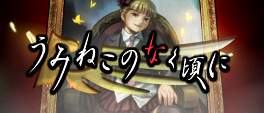
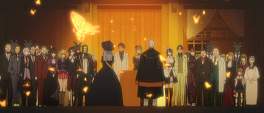
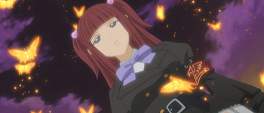
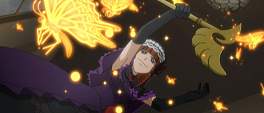
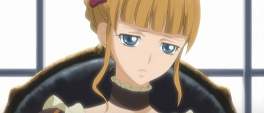
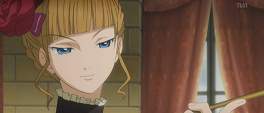
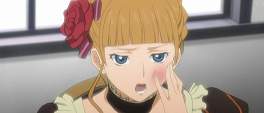
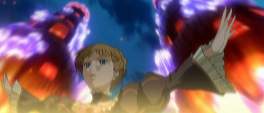
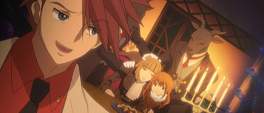
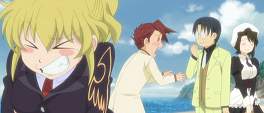
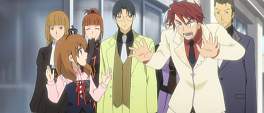

For instance, you often complained that Battler's arguments were too illogical to be taken seriously. This is indeed a problem... when you're expected to take them seriously. The visual novel makes it fairly clear that Battler's arguments are completely spurious, and he doesn't actually come up with some better ones until the answer arcs.
Another thing you found annoying was the sudden shift into fantasy. Of course, the fantasy scenes are the source of several awesome moments (not to mention the two funniest scenes in the entire VN). However, the fourth arc, which you found the most inexplicable, really is incredibly important in terms of revealing the purpose of the magic scenes. It makes it clear that magic scenes are either metaphors or stories; either they're a reflection of something that really happened, or the scene is part of someone's story. Most of the fourth arc's gameboard comes from Gohda, Kumasawa, Jessica, and Kyrie all telling Battler to believe in the witch.
In other words, the real problem in the anime is that, by eliminating a lot of apparently extraneous material due to time constraints, it became hard to understand the truth of events.
Well, Studio Deen probably never loved Umineko anyway. And without love, the truth cannot be seen.